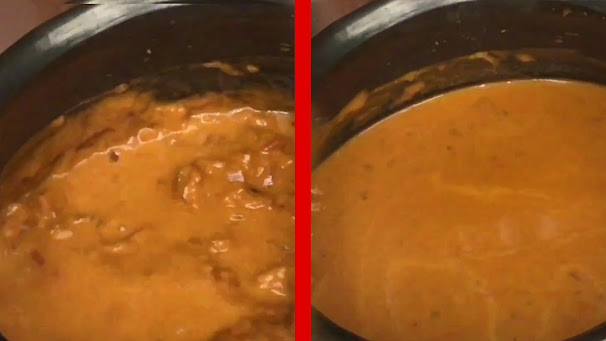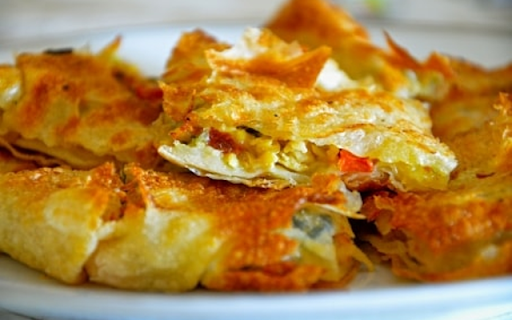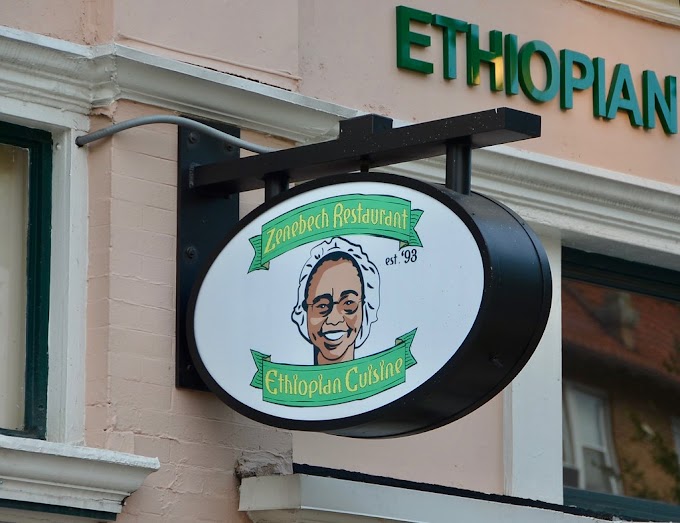How to make Ethiopian Shiro Wot (Chickpea Stew)
Shiro is an Ethiopian stew cooked using
chickpeas or broad beans, garlic, onions, ginger, tomatoes, and chili peppers
as the major components. The chickpeas give this stew a great texture and nutty
taste, but Shiro powder, which is a mixture of chickpea flour and different
spices, can be used instead.
Traditionally, the meal is cooked for major
events like Ramadan and Tsom. Shiro should be served with Injera flatbread on
the side.
Ingredients needed to make Shiro Wot:
- One sliced onion
- Oil
- A half spoon of minced garlic
- Fresh tomato purée
- Shiro flour (chickpea flour)
- Fresh green chilly (if you want)
Steps:
Step 1: Turn on the stove and start heating up
the cooking pot.
Step 2: Add one sliced onion into the pot.
Step 3: Cook the onions until the color is
brownish.
Step 4: Add a little bit of oil and a half spoon of minced garlic. Cook them for a few minutes.
Step 5: Add fresh tomato purée. Then cook the ingredients very well till the moisture is released.
Step 6: Prepare a bowl and add the Shiro flour
(chickpea flour). Then add water and mix them well. You have to remember that
the amount of Shiro flour and water depends on your need.
Step 7: Whisk the mixture into the cooking
pot.
Step 8: Mix the ingredients very well and cook
for a few minutes. Let the mixture absorb the flavor of the sauce.
Step 9: The sauce will absorb all the moisture
and start thickening (drying out).
Step 10: Start adding water when the sauce is
drying out (add a small amount of water then stir and do this again and again
till you get the desired thickness/consistency). Remember that Shiro flour
thickens as it cooks.
Step 11: Once the sauce starts to thicken it
will form bubbles and it may overflow, so check frequently. Don't forget to
cover the lid partially so that you can avoid overflow.
Step 12: Once it has come to boil, reduce the
heat cover the lid fully and let it simmer. Stir occasionally and continue
simmering. The longer it simmers the deeper the flavor.
Step 13: You may top it with fresh green
chilly (if you want).
Step 14: That's it. Congratulations you have
made your first Shiro wot! You can start serving.
How do you serve Shiro?
It is pretty much easy. You can eat it the way
that suits you. There are no limitations. But if you want to eat it Ethiopian
style then here is what you have to do.
1, Shiro can be served on a flat dish with Injera
(Ethiopian bread). Next, use your spoon and add the Shiro Wot (Chickpea Stew) on
top of the Injera. When you eat you should use your hand. The same way as shown
in this video:
2, You can simply eat it with a piece of bread. And of
course, using your hands.
What is Chickpea (Shiro)?
The chickpea, often known as chick pea, is an
annual legume belonging to the Fabaceae family, subfamily Faboideae. Gram or
Bengal gram, garbanzo or garbanzo bean, or Egyptian pea are all names for
distinct forms of it. Chickpea seeds are a good source of protein.
Nutritional facts about chickpeas
According to the U.S. Department of
Agriculture’s Food Data Central, one cup of chickpeas has:
- Calorie count: 269
- Protein in the amount of 14.5 grams (g)
- There is 4.25 g of fat in each serving.
- Carbohydrates: 44.9 g
- Dietary fiber: 12.5 g
- Calcium in the amount of 80.4 milligrams (mg)
- 4.74 milligrams iron
- Magnesium (78.7 mg)
- Potassium: 276 mg
- 11.5 milligrams sodium
Chickpeas have a lot of advantages
Chickpeas provide a variety of health
advantages due to their high nutritional content, including:
- Promote weight control
- If you have gluten intolerance, this is a fantastic replacement.
- Prevent constipation
- Assist with blood sugar management
- Encourage good cardiovascular health.
Is it healthy to eat chickpeas (Shiro) every day?
According to a new study, eating one serving
of beans, peas, chickpeas, or lentils per day can considerably lower 'bad
cholesterol' and hence the risk of cardiovascular disease.
What is the side effect of chickpeas (Shiro)?
Chickpeas, like other legumes, can cause
allergic reactions in certain people. If you have an intolerance to chickpeas, you
may have nausea, vomiting, stomach discomfort, and skin itching. Before eating
chickpeas, it's advised to see a doctor because allergic responses can be
severe and even life-threatening.
Fun Facts about Chickpeas (Shiro)
- Chickpeas were initially grown 7500 years ago in the Middle East, according to substantial evidence. Chickpea's fame swiftly expanded over the globe, and it was soon cultivated and consumed in many ancient civilizations, including Egypt, Greece, and Rome.
- Chickpeas go by a variety of names all across the world. Garbanzo beans, a common word in the United States, are also known as Bengal grams, Egyptian peas, Ceci beans, and Kabuli chana. Chickpeas exist in a range of varieties and colors, not simply the beige version we're familiar with from cans. Chickpeas come in a variety of colors, including black, green, red, and brown.
- In two categories, legumes are included in the Australian Government's recommended eating plan for a balanced diet! Because legumes and beans are classified as both vegetables and meat, they are an important element of a well-balanced diet.
- These ingenious tiny plants are potent nitrogen-fixing legumes that help to repair deficient soils. Their deep root structure helps to stabilize soils and avoid erosion; they may use little or no fertilizer while increasing soil fertility and they are a dry land agricultural crop that does not require irrigation. To add to their remarkable abilities, the chickpea plant's leaves contain a natural pesticide that keeps pests at bay.
- Since the 18th century, ground chickpeas have been used as a caffeine-free coffee replacement, and they are still popular today. The taste is reputed to be great, and it is widely accessible – why not give it a try?
- Chickpeas are high in antioxidants, vitamins, and minerals including folate, magnesium, vitamin b6, vitamin c, iron, potassium, calcium, phosphorus, and zinc, to name a few. They're also high in protein, making them an excellent meat substitute for vegans.
















1 Comments
Nice recipe.
ReplyDelete